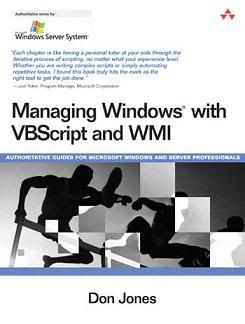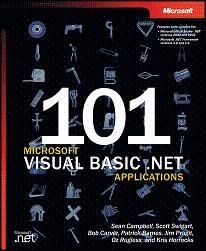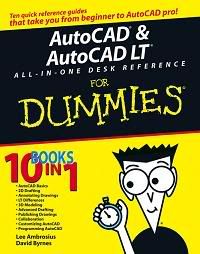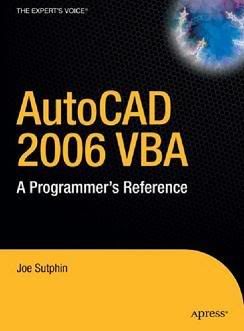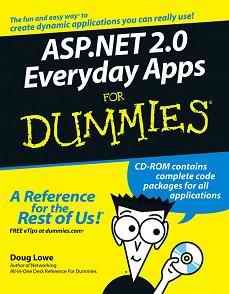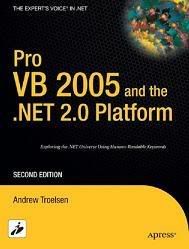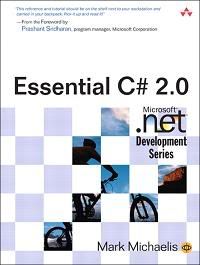Saturday, December 29, 2007
Thursday, November 29, 2007
Magically Vectorious
http://vectormagic.stanford.edu

PID code for Arduino
float iState = 0;
float lastTemp = 0;
#define PGAIN_ADR 0
#define IGAIN_ADR 4
#define DGAIN_ADR 8
#define WINDUP_GUARD_GAIN 10
float loadfloat(int address) {
// must be written
// this function return the float from EEPROM storage.
// This is used for the P,I, and D_GAIN settings.
// These are three values that need to be tuned after
// the machine up and running to make the PID loop
// work right.
}
float UpdatePID(float targetTemp, float curTemp)
{
// these can be cut out if memory is an issue,
// but they make it more readable
float pTerm, iTerm, dTerm;
float error;
float windupGaurd;
// determine how badly we are doing
error = targetTemp - curTemp;
// the pTerm is the view from now, the pgain judges
// how much we care about error we are this instant.
pTerm = loadfloat(PGAIN_ADR) * error;
// iState keeps changing over time; it's
// overall "performance" over time, or accumulated error
iState += error;
// to prevent the iTerm getting huge despite lots of
// error, we use a "windup guard"
// (this happens when the machine is first turned on and
// it cant help be cold despite its best efforts)
// not necessary. this makes windup guard values
// relative to the current iGain
windupGaurd = WINDUP_GUARD_GAIN / loadfloat(IGAIN_ADR);
if (iState > windupGaurd)
iState = windupGaurd;
else if (iState < -windupGaurd)
iState = -windupGaurd;
iTerm = loadfloat(IGAIN_ADR) * iState;
// the dTerm, the difference between the temperature now
// and our last reading, indicated the "speed,"
// how quickly the temp is changing. (aka. Differential)
dTerm = (loadfloat(DGAIN_ADR)* (curTemp - lastTemp));
// now that we've use lastTemp, put the current temp in
// our pocket until for the next round
lastTemp = curTemp;
// here comes the juicy magic feedback bit
return pTerm + iTerm - dTerm;
}

This work is licensed under a
Creative Commons Attribution-Noncommercial 3.0 Unported License.
Saturday, November 24, 2007
PSP Installer App
Why has the psp community not yet written an installer program like this for the hundreds of psp releases? Or is there one that I'm missing? I still dig through ads on pspupdates to download my apps to the pc and then sync to the psp.
PSP Installer App
Why has the psp community not yet written an installer program like this for the hundreds of psp releases? Or is there one that I'm missing? I still dig through ads on pspupdates to download my apps to the pc and then sync to the psp.
Tuesday, October 30, 2007
Inside Quonset Nation
Here are some shots inside my new hut of joy. I put in the kerosene heater left over from out sweet days if living aboard. It makes a fantastic four season hang out. It will be interesting to see how warm I can keep it when the temperatures really drop.
I got a solid core door and put it up on saw horses. My Nantucket Ditty Bag works perfectly as a hanging tool organizer. Home depot had some big hooks for a buck that I can just screw into the bracing and add impromptu features to the hut.
Here is the canoe awaiting repairs. I stripped off all the electric parts for a good old fashioned paddle coming up this weekend.
I need a wider angle lens to convey how nice it feels inside, but this long shot gives the idea.
Thursday, October 25, 2007
Control things from your PSP
Well one of the commenter's on the blog found this:
It is a great open source project called :
PSP WifiController
It consists of an app for the PSP paired with an app for the PC that hooks into PPJoy. This means any application that you can have on your computer that will respond to joystick presses will be able to accept control signals from the PSP over wifi.
Check it out at:
http://imk.cx/psp/wificontroller/
Control things from your PSP
Well one of the commenter's on the blog found this:
It is a great open source project called :
PSP WifiController
It consists of an app for the PSP paired with an app for the PC that hooks into PPJoy. This means any application that you can have on your computer that will respond to joystick presses will be able to accept control signals from the PSP over wifi.
Check it out at:
http://imk.cx/psp/wificontroller/
Wednesday, October 24, 2007
Fort Quonset
place! I found this made in the USA Clearspan brand tent on close
out at farmtek.com. I ended up building a floor from cheap chipboard
subflooring that is unfortunately full of bad chemicals. Under the
chip board I used free scrap wood from Lowe's to level it all out.
Materials for the floor ended up under $100. By the way, I didn't
knock that fence down. Its rotting of its own volition.
The steel frame consists of seven arches. I ordered one extra set over the standard six to decrease the spacing to 40" and beef up the structure to better manage any heavy snows. Though, I frankly don't think it would have been an issue with a structure this size. Though you are specifically warned in the instructions not to climb or hang on the structure, I hung on it anyway. Rebel! Its strong though! I set up little tabs of 2x4s sticking out from under the floor to support the ends of the poles.
Here is it all finished! I have started to move in. My canoe is safely stored inside now, and I am planning to setup a four season outdoor social space and small shop area. I even hung our hammock up inside and gently tested it out. There was a little flex, but it actually holds me up in the hammock quite well. The whole tent weighs 500 lbs and is excellent quality overall. It will be a great place for projects and enjoying the back yard all year round.
Monday, October 15, 2007
I heart Arduino
I am starting a new revision of my machine mod. I am planning to add a realtime clock, water level sensor, and improved interface. On a tip from my friend Casey, I checked out Arduino as a base for this second revision. Arduino has been developed particularly to bring electronics to first time users and has been adopted by artists, musicians, and designers all over the world. For me, its just a huge relief, and has brought a much higher fun ratio to my espresso hobby. My three favorite aspects of using arduino are that i can work in OS X, it uses a USB bootloader, and other people might be able to use my software and hardware designs for their own purposes. Its already catching on, but I expect that Arduino (and wiring) will continue to gain in popularity.
Learn lots more about arduino here: http://www.arduino.cc/
Wednesday, August 22, 2007
Downgrade any version PSP firmware to 1.5
to pull this off they actually figured out how to reverse engineer the process of putting the PSP into service mode and overwriting the filesystem with the original 1.5 firmware. The process involves changing the state of the battery and some copyright free code that does the filesystem operations. This works on any PSP even if it has been bricked or has the latest firmware. The best part is, it doesn't look like any firmware updates can fix this one.
So this should open the floodgates for PSP hacking and homebrew once again... now every single person who owns a PSP can play the great homebrew games and applications available for download for free from sites such as PSPUpdates.
It is still unknown if this method will work on the new slim PSP's, but not likely since the new hardware probably requires firmware newer than 1.5.
To get started with unbricking or downgrading your PSP, you need a friend who already has a hacked PSP, and an extra PSP battery is preferred. The download and instructions can be found here:
http://www.noobz.eu/joomla/news/pandoras-battery.html
Downgrade any version PSP firmware to 1.5
to pull this off they actually figured out how to reverse engineer the process of putting the PSP into service mode and overwriting the filesystem with the original 1.5 firmware. The process involves changing the state of the battery and some copyright free code that does the filesystem operations. This works on any PSP even if it has been bricked or has the latest firmware. The best part is, it doesn't look like any firmware updates can fix this one.
So this should open the floodgates for PSP hacking and homebrew once again... now every single person who owns a PSP can play the great homebrew games and applications available for download for free from sites such as PSPUpdates.
It is still unknown if this method will work on the new slim PSP's, but not likely since the new hardware probably requires firmware newer than 1.5.
To get started with unbricking or downgrading your PSP, you need a friend who already has a hacked PSP, and an extra PSP battery is preferred. The download and instructions can be found here:
http://www.noobz.eu/joomla/news/pandoras-battery.html
Saturday, May 12, 2007
Application Architecture for .NET: Designing Applications and Services
Build Your Own .NET Language and Compiler (with source code)
This practical book presents techniques that you can apply to everyday work. You’ll learn to add scripts and macro languages to your applications, add runtime expression evaluation to their applications, and generate code immediately. Further, you will learn parsing techniques, which are essential to extract information from any structured form of data—like text files, user input, XML, or HTML. As a bonus, the book includes a complete QuickBasic compatible compiler with source code that works. The compiler illustrates the book’s techniques and acts as a versatile .NET language. All software developers use languages, which are the fundamental tool of the trade. Despite curiosity about how languages work, few developers actually understand how. Unfortunately, most texts on language and compiler development are hard to digest, written from academic platforms for use in college-level computer science programs. On the other hand, Build Your Own .NET Language and Compiler demystifies compiler and language development, and makes the subjects palatable for all programmers. TABLE OF CONTENT: NOTE: There is something you should know. Source code is not complete! There is about 90+% of it in my upload but not whole. It is, also, the reason why I upload it separated from the book so you could deceide for yourself will you downlad it or not. Naturaly, there is no way for me to know which parts are missing so don't ask me, I don't know. Sorry, but it's not my fault and this is the best I could get. I recomend you to use it because (even like this) will save you a lot of time. Password: ganelon Download source code here |
Cisco Express Forwarding (Networking Technology)
What is the difference between routing a packet and switching a packet? What is this CEF feature that is referred to in Cisco documentation and commonly found in Cisco IOS commands? Cisco Express Forwarding addresses these questions through comprehensive discussions of Cisco Express Forwarding (CEF). CEF is a term used to describe one of the mechanisms used by Cisco IOS routers and Cisco Catalyst switches to forward packets. CEF offers the benefits of improved performance, scalability, and resilience. CEF is found in almost all Cisco IOS routers and Catalyst switches, however documentation of the topic is very scarce. This book addresses common misconceptions about CEF and packet switching across various platforms. It helps readers understand CEF and how to troubleshoot whether there is a CEF or another problem occurring in the network. The book guides readers through CEF basics, supplying exercises and troubleshooting scenarios that enhance their ability to recognize common mistakes, as well as to provide them with some models for configurations that they can follow in their own networks. |
Security for Wireless Ad Hoc Networks
 This book addresses the problems and brings solutions to the security issues of ad-hoc networks. Topics included are threat attacks and vulnerabilities, basic cryptography mechanisms, authentication, secure routing, firewalls, security policy management, and future developments. An Instructor Support FTP site is available from the Wiley editorial board.
This book addresses the problems and brings solutions to the security issues of ad-hoc networks. Topics included are threat attacks and vulnerabilities, basic cryptography mechanisms, authentication, secure routing, firewalls, security policy management, and future developments. An Instructor Support FTP site is available from the Wiley editorial board.
Analyzing Business Data with Excel
Learn how to apply Excel's advanced data analysis features to solve real-world business problems. This hands-on reference targets specific business situations, then demonstrates how to create spreadsheets for these problem areas. Topics include statistics, pivot tables, workload forecasting, modeling, queuing, data importing, and more. Perfect for professional Excel users working in an office environment. As one of the most widely used desktop applications ever created, Excel is familiar to just about everyone with a computer and a keyboard. Yet most of us don't know the full extent of what Excel can do, mostly because of its recent growth in power, versatility, and complexity. The truth is that there are many ways Excel can help make your job easier-beyond calculating sums and averages in a standard spreadsheet. Analyzing Business Data with Excel shows you how to solve real-world business problems by taking Excel's data analysis features to the max. Rather than focusing on individual Excel functions and features, the book keys directly on the needs of business users. Most of the chapters start with a business problem or question, and then show you how to create pointed spreadsheets that address common data analysis issues. TABLE OF CONTENT: Password: ganelon |
Powerful Sleep - Secrets of the inner sleep clock
Password: knowfree.net |
Pro SQL Server 2005 Reporting Services
Sure, there are enough differences between design applications to mean that the designer must become familiar with each particular environment. However, there’s enough crossover functionality to make this learning curve small. For example, the SUMfunction is the same in Crystal Reports as it is in MS Access as it is in Structured Query Language (SQL). With MS SQL Server 2005 Reporting Services (referred to as SSRS throughout the book), there is, again, only a marginal difference in the way reports are designed from one graphical report design application to another. So, if you do have previous reporting experience, your learning curve for SSRS should be relatively shallow. This is especially true if you come from a .NET environment, because the report designer application for SSRS is Visual Studio 2005 or the application included with SQL Server 2005, Business Intelligence Development Studio (BIDS). TABLE OF CONTENT: Password: ganelon |
Learning German on Your Own - The Complete Idiot’s Guide
 Sprechen Sie Deutsch?
Sprechen Sie Deutsch?
This guide covers the essentials of grammar, vocabulary, pronunciation, and conversation. It contains the most accurate information for students and travelers alike, along with a German/ English and English/German dictionary appendix for readers to reference.
You can also use this book to impress your friends with words beyond 'Bratwurst' and 'Kindergarten'.
Download Here
417 Pages, 3.6MB
Password: knowfree.net
Understanding .NET, 2nd Edition
MS's .NET is revolutionizing Windows-based software development. Since its initial release in 2002, .NET has changed significantly, becoming the foundation for a new generation of Windows applications. The .NET Framework and Visual Studio, the two core aspects of this initiative, provide a multilanguage environment in which developers can create Web services, graphical user interfaces, and other kinds of applications. Taken as a whole, the .NET technologies have changed the way nearly every Windows application is built. Now fully updated for version 2.0 of the .NET Framework and Visual Basic 2005, Understanding .NET, Second Edition, is a concise guide to the landscape of Windows development. Margin notes, detailed diagrams, and lucid writing make this book easy to read and navigate, while analysis sections explore controversial issues and address common concerns. David Chappell's independent perspective and straightforward descriptions clarify both how the .NET technologies work and how they can be used. Coverage includes: The key to using a new technology is to understand the fundamentals. This book provides the robust foundation developers and technical managers need to make the right decisions and maximize the potential of this revolutionary framework. Password: ganelon |
VS Tools for Office: Using VB 2005 with Excel, Word, Outlook, and InfoPath (with source code)
Visual Studio Tools for Office is both the first and the definitive book on VSTO 2005 programming, written by the inventors of the technology. VSTO is a set of tools that allows professional developers to use the full power of Visual Studio .NET and the .NET Framework to put code behind Excel 2003, Word 2003, Outlook 2003, and InfoPath 2003. VSTO provides functionality never before available to the Office developer: data binding and data/view separation, design-time views of Excel and Word documents inside Visual Studio, rich support for Windows Forms controls in a document, the ability to create custom Office task panes, server-side programming support against Office, and much more.
Password: ganelon |
Best Kept Secrets in .NET (with source code)
Whether you are an experienced developer or a .NET novice, this book will help you be more productive, create better code, and produce superior software with the author's valuable, but lesser-known features of Visual Studio and the .NET Framework. For example, did you know that you could manage code snippets in Visual Studio .NET? Have you ever tried the Incremental Search feature? Have you discovered the ErrorProvider control? Do you know how to short-circuit operators, alias data types, build regular expressions, or improve your type casting? Have you seen all of the database tools available from Server Explorer? Did you know that you could manage your database scripts within Solution Explorer and include your stored procedures under source code control? Have you tried expanding the capabilities of a dataset using ExtendedProperties? With all of the talk about agile methodologies and Extreme Programming, have you tried to build a test harness with .NET? How about deprecating your methods? This book covers these secrets and much more! The primary goal of this book is to let you in on the secrets and hidden treasures that you can find discover in Visual Studio and the .NET Framework. If, as you read through this book, you say to yourself, “I didn’t know I could do that with .NET!” then this book has met its objective. Download here (source code included) Password: ganelon |
Managing Windows with VBScript and WMI
Visual Basic Scripting (VBScript) and Windows Management Instrumentation (WMI) are vital tools for systems administrators grappling with the increasing complexity of Windows technologies. However, busy admins have been without a straightforward guide to scripting…until now. Managing Windows(R) with VBScript and WMI explains how Windows administrators can effectively use VBScript to automate common administrative tasks and simplify complex ones. Detailed coverage of security concerns provides admins with the means for safely using VBScript in Windows environments. The book is organized around the problems you face daily, with reusable examples and coverage of Windows NT, Windows 2000, Windows XP, and Windows 2003. This user-friendly reference demystifies scripting and then shows you how to produce new scripts from scratch. You will be producing useful scripts right away as you study the VBScript language and learn how to control nearly every aspect of the Windows operating system with WMI and the Active Directory Services Interface (ASDI). You will be able to build your own administrative Web pages and use advanced scripting technologies such as script encryption, scripting components, and script security. The book closes with still more ready-made example scripts accompanied by complete line-by-line explanations. The CD includes all the code from the book and trial versions of PrimalScript 3.0 and VbsEdit. A companion Web site provides updates and errata.
Password: ganelon |
Doing Objects in Visual Basic 2005
"Doing Objects in Visual Basic 2005" is one of the few books that I've seen that lays the proper object-oriented foundation to make new Visual Basic.NET developers as well as VB6 veterans successful in moving to the .NET Framework." - Paul Ballard, President, Rochester Consulting Partnership, Inc. "Deborah Kurata's "Doing Objects in Visual Basic 2005" is salvation for every programmer beached on the forbidding isle of .NET object-oriented programming. 'Right this way,' she says, leading you confidently into that vaguely menacing interior. Step follows step. |
Pro SQL Server 2005
This book provides a critical examination of all of the major new functionality in SQL Server 2005, covering such diverse topics as CLR integration, the new management tools, SQL Server Integration Services, Service Broker, Transact-SQL (T-SQL) programming, and database mirroring. The book does not profess or even try to be a comprehensive reference on any one of these areas as you are probably aware, this would often require a sizable book in itself. Instead, it provides practical, in-depth coverage of the core topics in each area, illustrated with realistic examples. Hopefully, we’ve done this in such a way that you will immediately be able to translate what you learn here into your business environment and have a firm foundation for exploring a particular topic further, should it be necessary. SQL Server 2005 is a vast new release. This book provides you with a starting point, a road map, and a strong foundation on which to build. Its practical nature and careful guidelines and advice will mean that the book continues to be useful long after your initial assessment of SQL Server 2005 is complete. Table Of Content: Password: ganelon |
Ajax Video

Microsoft ASP.NET AJAX v1.0
ASP.NET AJAX is a free framework for quickly creating a new generation of more efficient, more interactive and highly-personalized Web experiences that work across all the most popular browsers.
With ASP.NET AJAX, you can:
* Create next-generation interfaces with reusable AJAX components.
* Enhance existing Web pages using powerful AJAX controls with support for all modern browsers.
* Continue using Visual Studio 2005 to take your ASP.NET 2.0 sites to the next level.
* Access remote services and data directly from the browser without writing a ton of complicated script.
* Enjoy the benefits of a free framework with technical support provided by Microsoft.
WMV, 1024х768
Language: English
File: ajax.part01.rar
DownloadLink: h**p://rapidshare.com/files/29853197/ajax.part01.rar
———————————————————————————————-
File: ajax.part02.rar
DownloadLink: h**p://rapidshare.com/files/29856188/ajax.part02.rar
———————————————————————————————-
File: ajax.part03.rar
DownloadLink: h**p://rapidshare.com/files/29858279/ajax.part03.rar
———————————————————————————————-
File: ajax.part04.rar
DownloadLink: h**p://rapidshare.com/files/29860180/ajax.part04.rar
———————————————————————————————-
File: ajax.part05.rar
DownloadLink: h**p://rapidshare.com/files/29861898/ajax.part05.rar
———————————————————————————————-
File: ajax.part06.rar
DownloadLink: h**p://rapidshare.com/files/29863271/ajax.part06.rar
———————————————————————————————-
File: ajax.part07.rar
DownloadLink: h**p://rapidshare.com/files/29864574/ajax.part07.rar
———————————————————————————————-
File: ajax.part08.rar
DownloadLink: h**p://rapidshare.com/files/29865749/ajax.part08.rar
———————————————————————————————-
File: ajax.part09.rar
DownloadLink: h**p://rapidshare.com/files/29867064/ajax.part09.rar
———————————————————————————————-
File: ajax.part10.rar
DownloadLink: h**p://rapidshare.com/files/29868011/ajax.part10.rar
———————————————————————————————-
101 MS Visual Basic .NET Applications
The 101 sample applications that make up this book contain code that answers many common questions a beginner-to-intermediate-level Microsoft Visual Basic .NET developer is faced with when building Microsoft .NET applications. Each sample application was developed using a set of coding conventions (which you’ll find in this book), and each sample shares a common look and feel, as much as possible. Each sample also includes a readme.htm file that explains some basics of the application in case you’re reviewing a sample without having the book close at hand. The samples in this book are ready to be run in either the Microsoft Visual Studio .NET 2002 or 2003 development environment. You can find the Visual Studio .NET 2003 files in Chapter folders within the \101VBApps folder; look inside the VS2002 folder within the \101VBApps folder for the Visual Studio .NET 2002 files. Finally each application is designed to be “F5-able,” meaning that they should all run out of the box, without any special configuration. Any circumstances for which specific software or setup is needed is fully documented in the readme. The only general requirement is that you have Microsoft SQL Server installed either as a default instance or an instance installed with the name NETSDK. You can easily install a version of SQL Server by installing the version of MSDE that ships with the .NET Framework quickstarts. Explore 101 of the most useful Visual Basic .NET applications in action—and jumpstart your own Microsoft .NET Framework-based development projects. This guide provides expert, behind-the-code commentary on 101 fully executable code samples—distilling more than 700 hours of programming time into best practices for Microsoft Windows Forms development. Each code sample demonstrates core features and functions of Visual Basic .NET and the .NET Framework, explains the underlying programming concepts, and provides a complete code walkthrough. From creating basic data entry forms to drilling deep into the .NET Framework, you’ll learn the techniques that Microsoft’s own developers use to write real-world applications with Visual Basic .NET. TABLE OF CONTENT: Password: ganelon |
AutoCAD And AutoCAD LT AIO Desk Reference - For Dummies
This book gives you an understanding of all the main features that you need to know in order to be productive with AutoCAD and AutoCAD LT. The All-in-One Desk References For Dummies are much different from other For Dummies books you may have read; more information is crammed between the two covers, and the content is more in-depth. This book is laid out to focus on individual topics and allows you the freedom of moving around between its minibooks. We recommend that if you are not familiar (or somewhat familiar) with AutoCAD that you read through Books I and II before moving on to the other minibooks. After you read this book, don’t let it run too far from your desk, you will find it helpful as a reference whenever you might need it. We expect that you know how to use the Windows operating system and understand the basics of navigating folders and starting applications. To take advantage of everything that AutoCAD offers and what is contained in this book, we assume that you have at least an Internet connection — dial-up at least, but a high-speed cable or DSL connection would be best. As long as you have AutoCAD or AutoCAD LT installed on the computer in front of you and a connection to the Internet, you are ready to get started. TABLE OF CONTENT: Password: ganelon |
AutoCAD 2006 VBA - A Programmer’s Reference
This book provides a concise guide to the kind of customization programmers can achieve with AutoCAD 2006. It demonstrates how to use AutoCAD through short code examples written in Visual Basic for Applications (VBA). It also includes a complete quick reference that lists all the events, methods, and properties available with AutoCAD. Finally, it describes all the constants and system variables. What Is This Book About? Who Is This Book For? TABLE OF CONTENT: Password: ganelon |
ASP.NET 2.0 Everyday Apps - For Dummies
In this book, you’ll find eight complete ASP.NET applications. We’re not talking trivial Hello-World-type applications here. Instead, they’re real-world applications like shopping carts and discussion forums. You can use any of them as-is, or modify them as you see fit. So you’ve got workable stuff already included. (What a concept.) This book is a practical introduction to ASP.NET 2.0 Web programming. It pro vides you with actual working code to build the most popular types of applications on the Web. These applications enable you to: ASP.NET 2.0 Everyday Apps For Dummies doesn’t pretend to be a comprehensive reference for every detail of ASP.NET programming. Instead, it takes a learn-by-example approach, under the assumption that you are already a pretty competent programmer who can best learn by seeing real-world exam ples. Designed using the easy-to-follow For Dummies format, this book helps you get the information you need without laboring to find it.
Password: ganelon |
Moving to Linux: Kiss the Blue Screen of Death Goodbye!
Moving to Linux can help you migrate from Windows to Linux in just hours! By the time you've finished, you'll be able to do virtually anything in Linux-without the aggravation, crashes, security risks, or high costs of running Windows! This is not a book for techies! It's a book for people like you: people who write documents, create spreadsheets, surf the Web, send emails, listen to CDs, play games-and want to do it simply in Linux, without becoming technical experts! - Convert your Windows PC to a Linux system There's more!! Write, calculate, and present with OpenOffice.org, the free office suite for Linux that can also read and write all of your existing Microsoft Office documents. Say goodbye to expensive software upgrades, burdensome Microsoft licensing, Windows viruses, and "blue screens of death." Say hello to computing the way it's supposed to be—with Linux! Password: ganelon |
Pro VB 2005 And .NET 2.0 Platform 2nd Edition
With the release of .NET 2.0, the Visual Basic .NET programming language has been officially renamed as Visual Basic 2005—perhaps in an attempt to highlight the fact that the BASIC language used with the .NET platform has nothing to do with the COM-centric VB 6.0. As you would guess, VB 2005 adds even more language features to a developer’s tool chest such as operator overloading, custom conversion routines, and generics. For all practical purposes, there really is no difference between VB 2005, C#, or any other .NET programming language. Now more than ever, an individual’s language of choice is based on personal preferences rather than the language’s overall feature set. In any case, regardless of which group you identify with, I do welcome you to this book. The overall approach I will be taking is to treat VB 2005 as aunique member of the BASIC family. As you read over the many chapters that follow, you will be exposed to the syntax and semantics of VB 2005, dive into each of the major .NET code libraries (Windows Forms, ASP.NET, ADO.NET, XML web services, etc.), and have athorough grounding in object-oriented development.
Password: ganelon |
Essential C# 2.0
This book provides complete, up-to-date coverage of all the programming constructs in C#. Masterfully organized, it allows beginning programmers to get on board and leads more experienced programmers into the world of structured programming. Because of its unwavering focus on the essential programming constructs of C#such as generics, delegates, and much morethis book is indispensable. For programmers who want to solve their day-to-day programming issues using the latest features this modern programming language has to offer, this book is indispensable. This books is a clear, concise guide to C#including the features new to C# 2.0. The book clearly presents material for beginners and experts and provides contrasts and comparisons between C# and other languages. The C# language is covered comprehensively and each important construct is illustrated with succinct code examples. Complete code examples are available online. Mark Michaelis has organized the material for quick access. Graphical "mind maps" at the beginning of each chapter show what material is covered and how each topic relates to the whole. C# 2.0 has a multitude of new features that make the language even more powerful, productive, and efficient. These new features are thoroughly covered in this book. A separate appendix on C# 2.0 topics helps readers quickly find new features of the language. Whether you're just starting out as a programmer, are an experienced developer looking to learn C#, or are a seasoned C# programmer interested in learning the new features of C# 2.0, Essential C# 2.0 gives you just what you need to quickly get up and running writing C# applications. TABLE OF CONTENT: Password: ganelon |




















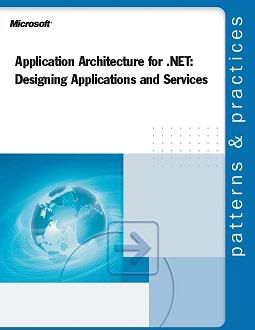



 Here's how to put your sleep back into its natural energized state, that will give you the extra energy you deserve… And you'll never have to fight with your feeling exhausted again!
Here's how to put your sleep back into its natural energized state, that will give you the extra energy you deserve… And you'll never have to fight with your feeling exhausted again! This book was written in parallel with a real SSRS deployment for a health-care application, so it covers almost every design and deployment consideration for SSRS, always from the stand-point of how to get the job done effectively. You’ll find step-by-step guides, practical tips, and best practices, along with code samples that you’ll be able to modify and use in your own SSRS applications. At its core, the process of designing reports hasn’t changed substantially in the past 15 years. The report designer lays out report objects, which contain data from a known data source, in a design application such as
This book was written in parallel with a real SSRS deployment for a health-care application, so it covers almost every design and deployment consideration for SSRS, always from the stand-point of how to get the job done effectively. You’ll find step-by-step guides, practical tips, and best practices, along with code samples that you’ll be able to modify and use in your own SSRS applications. At its core, the process of designing reports hasn’t changed substantially in the past 15 years. The report designer lays out report objects, which contain data from a known data source, in a design application such as 


